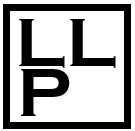Fine-Free is Fine, But Are You Feeling Fee-Free?
A decrepit fax machine. Photo by Abhisek Sarda.
The fine-free movement has been growing at public libraries across the country. In 2019, the ALA published several resolutions, op-eds, FAQs, and other items promoting the fine-free movement. Response to the adoption of fine-free has been extraordinarily positive, and media coverage went from a trickle 20 years ago to a veritable deluge in 2020 and beyond. Fine-free is rightly positioned as an issue of equity and access. Is it time to make a similar transition to fee-free libraries?
While speaking at the Indiana Library Federation conference in November, we asked the audience how many of their libraries were fine-free, and virtually every hand went up. When we asked how many had gone fee-free for things like printing and faxing, there was only a smattering of raised hands.
We’ve seen and heard about many libraries that make printing some number of pages free, and that’s a great start, but it's time to expand that thinking for other basic technology services and move to fee-free more broadly. Particularly for something as essential as a fax.
For many, the fax machine is an anachronism, a joke of a technology that has little relevance today. While that might be true in most cases, in many - particularly those associated with bureaucracies and service providers - fax is still a necessary evil.
The fact that this is the case means fax fees are essentially a penalty for the poor. It’s particularly problematic when library fax services add the additional hurdle of requiring a credit or debit card to pay! Sorry unbanked patrons, no fax for you! Obstacle after obstacle after obstacle - library fees shouldn’t be one of them.
But those fees must make a difference, you may be thinking. Maybe. At one library, where we were able to review the fax details for 2022, the financial benefit to the library was tiny. There were about 100 fax transactions over the course of the year, which represented just under $500 in “sales,” of which the library received - drum roll please - less than $10.
Let’s stop and think about what this means. That $500 sales figure must represent more than the cost of maintaining and operating the machine. Assuming that the company providing the services is making more than zero but less than $500, we can estimate the cost as $350-$450 per year. That isn’t much, but its value is priceless (or makes a difference) to the people who depend on their library for this service.
At the same time, we’ve also come across libraries that are making 3D printing filament available for free but still charge for printing and faxing. While we applaud the accessibility this provides, what does it say about priorities? What kinds of patrons benefit from 3D printing versus faxing? How can we think about these issues in the context of access and equity?
Make no mistake, this is an issue of equity. When systems demand people provide information in specific ways and formats, libraries should provide the necessary tools and support at no cost. Should there be parameters? Absolutely! Page limits for printing make sense, as do limits on the number of faxes that can be sent per patron per day. It shouldn’t be that hard to find the right balance between breaking the bank and squeezing patrons for every dime.
In asking librarians in a wide range of situations, we have heard dozens of approaches. Some charge no fees for anything. Others have page and document limits. Still others consider the context of the items being printed or faxed, with things like timesheets, medical forms, and government documents being provided fee-free and other documents carrying a cost. The right balance is out there, but it may not be the same for everyone.
What should be the same for everyone, however, is the commitment to provide broad and equitable service to all. So what steps can be taken to address the situation? Here are a few ideas to consider:
Understand the costs and benefits - What does it actually cost to own, operate, and maintain print, fax, and scanning equipment? What are the transmission costs for fax? How much revenue does it generate?
Library policy - Is it flexible, does it allow a certain volume or variety of material to be produced or sent for free?
Alternatives - Are people being shown how to use other technologies to replace more costly ones? Could a document be saved as a PDF and sent via email rather than fax, for example? Would a web-based fax service suffice?
Look at other libraries’ approaches - As mentioned above, there are so many ways to consider and address this issue. Look for ones that might be analogous to your situation.
Work with boards, friends, and foundations - To share the impact and information on moving to a fee-free or reduced-free model, supported by real examples.
For some, this might be a minor issue, something that can be easily relegated to the back burner. For the people who have no other means to access these services, they are beyond important. They need to be provided in a way that supports the needs of the communities being served. Charging those who are often the most vulnerable doesn’t sound much like equity, now, does it?
How are you experiencing these kinds of technology services through the library - either as a library user or a library worker? We’d love to hear from you.

